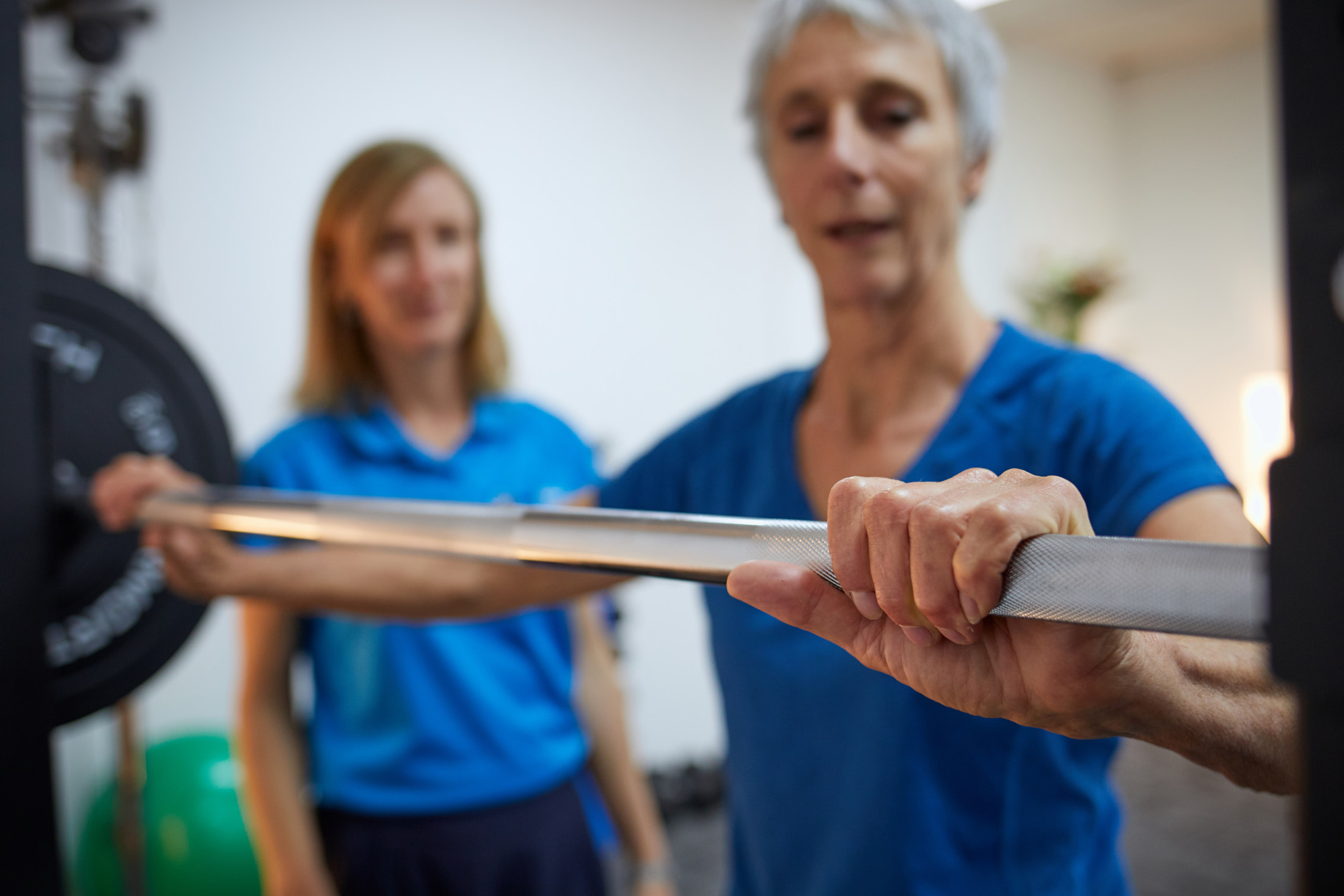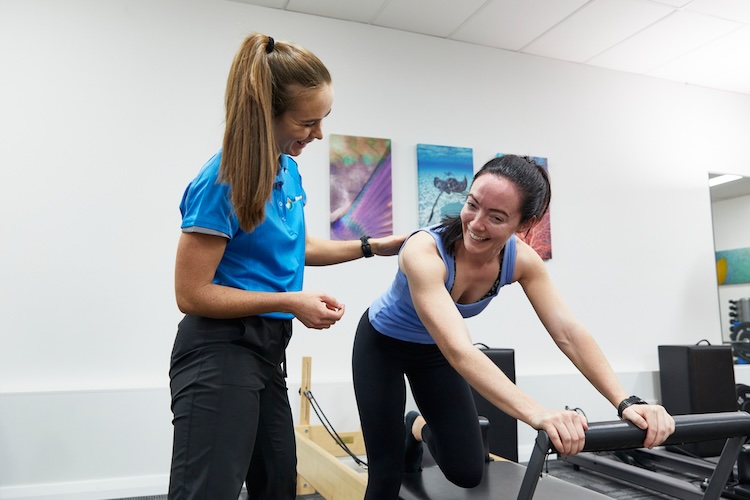
Physiotherapy for common leg injuries
Most of us take our legs for granted and only pay attention to them once there is an issue. We can take care of our legs by resting and elevating them, eating healthy food and exercising. So what happens when something goes wrong?
This blog explores some common leg injuries and how to treat them. These injuries most commonly occur in runners but can happen to anyone.
The 6 most common leg injuries are:
-
Plantar Fasciitis
-
Achilles Tendonitis
-
Patellofemoral pain syndrome
-
Iliotibial Band (ITB) Syndrome
-
Stress Fractures
-
Shin Splints
Plantar fasciitis
The primary symptom of plantar fasciitis is pain in the bottom of the foot, from the heel into the arch. It’s especially painful when you get up in the morning and after you’ve been sitting for a long time. Causes of plantar fasciitis include incorrect or old shoes, tight calf muscles, flat feet, or high arches.
For runners the discomfort may be present at the start of a run or subside during the run and then recur later. High arches will cause you to roll your feet too far outward while running. Plantar fasciitis may occur due to training errors (increasing mileage or intensity too quickly), poor running form or ransitioning too quickly from treadmill to outdoor running.
Treatment approaches to consider at home:
-
Reduce running – switch do a different from of exercise like cycling or swimming for a while
-
Roll your foot on ice (reuse a water bottle) 2-3 x day
-
Get fit for shoes if you have high arches
-
Replace running shoes every 400 to 600 miles.if you are a runner
Stretching and strengthening the calf muscle is the most indicated treatment for plantar fasciitis. A physiotherapist will accurately assess if you have plantar fasciitis, and then devise a treatment plan including a home exercise plan with stretching and strengthening exercises specifically for your legs.
Other factors such as losing weight, addressing any arthritis. or metabolic concerns is essential for lasting recovery from plantar fasciitis.
Achilles tendonitis
Achilles tendonitis is characterized by pain in the heel. It is an injury of the Achilles tendon, which connects the calf muscle to the heel bone. It’s common in runners but also middle-aged people who play sports only on the weekends.
Pain may be more prominent in the morning with the first few steps out of bed. This is because the calf muscle is shortened in sleeping positions. When running the pain will occur in heel strike or with sudden changes of direction.
Causes of Achilles tendonitis: include excessive hill running or stair climbing, tight calf muscles. flat feet (overpronator), incorrect od overused running shoes .and training errors
Treatment for Achilles tendonitis:
-
Modification of training schedule.
-
Stretching calf muscles.
-
Avoiding hills.
To help prevent Achilles tendonitis from occurring, proper stretching, strengthening and training schedule is needed. A sports physiotherapist can help with all aspects of this. Rehab may begin in the studio to address the injury and then progress to modified training with the aim of building your athletic performance to prevent further injury.
Patellofemoral pain syndrome
Patellofemoral pain syndrome (commonly referred to as runner’s knee) is characterized by pain that builds up gradually and is usually located beneath or around the kneecap. The pain is aggravated by squatting and going up and down stairs. Stiffness in the knee after prolonged sitting is also a symptom of this injury.
Causes of Patellofemoral pain syndrome (runners’ knee):
-
Weak thigh and hip muscles.
-
Flat feet (overpronator).
-
Tight hamstrings and quadriceps muscles.
-
Incorrect or overused shoes
-
Poor running form.
-
Transitioning too quickly with running mileage.
Treatment to prevent Patellofemoral pain syndrome from happening begins a full physiotherapy assessment. A treatment program can then be devised which will involve treating the injury, strengthening the leg muscles, analyzing running style, gait and training regime.
Next Wave Physiotherapists use the latest evidence based approaches for strength and conditioning, athletic performance, injury management and prevention.
Iliotibial band (ITB) syndrome
ITB syndrome is characterized by pain on the outside of the knee (and sometimes on the outside of the hip or leg). With this injury, a runner may notice the pain more on slower runs than fast runs, running hills or going up or down stairs.
Causes of Iliotibial band (ITB) syndrome :include;
-
running on a banked surface or changes in running surfaces
-
weak hip abductor and hip extensor muscles,
-
tight hip muscles (especially iliotibial or IT band muscle).
-
Incorrect shoe type.
-
Poor running form.
Treatment for Iliotibial band (ITB) syndrome modifying training schedule, strengthening hip abductors and hip extensor muscles, massaging lateral (outside) knee and stretching hip muscles (IT band).
Shin splints
As the name suggests, a shin splint injury is pain in the shin and can be felt anywhere from the knee to the ankle. The pain is caused by an inflammation of the muscles tendons, and bone tissue around the front of the lower leg . Shin splints are common in runners and dancers, and the treatment involves rest and changing your exercise routine.
The best way to help prevent shin splints is to practice good shoe maintenance. Most importantly, a runner should wear shoes that are appropriate for his or her foot type and training intensity. You may need prescription orthotics if the foot mechanics cannot be controlled with a shoe alone..
Stress fractures
Stress fractures are tiny cracks in a bone caused by repetitive force, often from overuse — such as repeatedly jumping up and down or running long distances. Stress fractures can also develop from normal use of a bone that’s weakened by a condition such as osteoporosis.
Stress fracture injuries cause persistent pain, most commonly in the shin, but can be in the foot, hip, thigh or pelvis.
Stress fractures are more severe than shin splints and require serious management.
Some people may need to be immobilized in a walking boot or be required to use crutches to allow the stress fracture to heal. Sometimes surgery is required if the stress fracture is severe enough or is in an area of high risk. When this happens people need to consider non-weight-bearing activities like swimming to maintain fitness.
The best approaches to preventing stress fractures are proper training, proper shoe maintenance and not running on excessively hard surfaces.
Next Wave Physiotherapy
Our physiotherapists have extensive experience treating people of all ages with lower limb injuries. Serious athletes, weekend warriors, teen’s, office workers, first time mum’s and grandparents all have different risks and contributing factors that affect functional fitness and athletic performance.
A physiotherapist assesses and treats according to what is personally needed for an individual and what their goals outside of the rehab studio are. Whether it’s returning to marathon running or being bale to walk the dog… we can help!
THERE ARE THREE LARGE PREDICTORS WHICH CAN BE USED TO ESTIMATE INJURY RISK TO ANY RUNNER:
-
Running technique
-
Recent running load (within the last 3 weeks)
-
Lower limb strength
The crux of it is… if your running technique is inefficient or not evenly distributing load through the legs, you haven’t run in a while, or your legs aren’t strong; then you are exposing yourself to a higher injury risk whenever you run.
Find out more about Running Injury Prevention and return to sport after an injury in these blogs.






